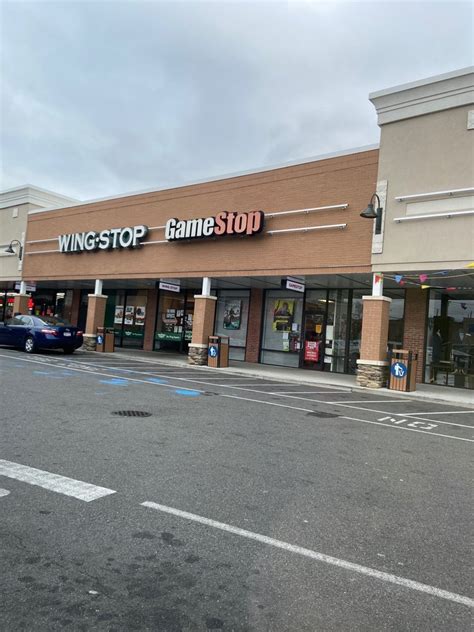
A Staten Island GameStop employee is facing accusations of intentionally damaging a customer’s purchased Nintendo game box by stapling the receipt directly to it and, allegedly, puncturing the case, sparking outrage online. The incident, stemming from a disagreement over the condition of the box, has ignited a debate about customer service practices and the handling of collectible items.
The controversy erupted after the customer, known online as “TribalSpaceman,” shared his experience on social media platforms, including Reddit and X (formerly Twitter), posting images of the damaged game box. According to his account, he had purchased a copy of the Nintendo Switch game “Metroid Dread” from the Staten Island GameStop location. A dispute arose with the employee regarding the box’s condition, with the customer contending that it was not in the pristine condition expected by collectors. “I was just haggling a little bit on the condition of the box,” TribalSpaceman explained in his Reddit post, as reported by Yahoo News.
The situation escalated when, after completing the purchase, the employee allegedly stapled the receipt directly to the game box, piercing the cardboard. TribalSpaceman also claimed that the employee may have intentionally punctured the plastic wrapping of the game, though this remains unconfirmed. This act of stapling the receipt onto the box, especially given the collector’s concern about its condition, was viewed as a deliberate act of disrespect and disregard for the customer’s property.
The images of the damaged box quickly went viral, triggering a wave of criticism directed at GameStop and the employee involved. Social media users expressed their outrage, with many condemning the employee’s behavior as unprofessional and unacceptable. The incident has also resurfaced broader discussions about the treatment of customers, particularly those involved in collecting games and other memorabilia, and the expectations for handling these items with care.
GameStop has yet to release an official statement on the Staten Island incident, but is reportedly investigating the situation.
The incident comes at a time when GameStop is under scrutiny as it seeks to reinvent itself amid changing consumer habits in the gaming industry. The company, once a dominant force in the retail gaming market, has faced challenges from the rise of digital downloads and online game sales. Efforts to adapt include expanding into new areas such as collectibles and esports, but maintaining a positive customer experience remains crucial for its long-term success. This negative episode potentially undermines these efforts by highlighting customer service issues.
The incident serves as a reminder of the importance of customer service, especially in niche areas like game collecting, where perceived value and condition are paramount. The episode will likely have a lasting impact on how consumers view GameStop, highlighting the need for employee training and consistent customer service practices across all locations.
Background on GameStop and the Gaming Retail Landscape
GameStop, headquartered in Grapevine, Texas, has been a major player in the video game retail industry since its inception in 1984, then known as Babbage’s. Over the years, it acquired other retail chains such as FuncoLand and Electronics Boutique, solidifying its position as a leading destination for gamers looking to buy new and pre-owned games, consoles, and accessories. The company’s business model primarily revolves around selling physical copies of games, trading in used games, and offering a range of gaming-related merchandise.
However, the gaming industry has undergone a significant transformation in recent years with the rise of digital distribution. Platforms like Steam, PlayStation Network, and Xbox Live allow gamers to purchase and download games directly to their consoles or PCs, bypassing the need for physical copies. This shift has posed a major challenge to GameStop, as digital sales have steadily increased while demand for physical games has declined.
In response to these challenges, GameStop has been exploring various strategies to adapt to the changing landscape. One key initiative has been to expand its offerings beyond just games, focusing on collectibles, toys, and other merchandise that appeal to gamers. The company has also invested in esports, seeking to capitalize on the growing popularity of competitive gaming.
Despite these efforts, GameStop has faced financial difficulties in recent years, including store closures and declining revenue. The company has also undergone several leadership changes, as it searches for a sustainable path forward in the evolving gaming market. The COVID-19 pandemic further accelerated the shift to digital gaming, adding to the pressures on GameStop’s traditional retail model. The company has also tried its hand in the cryptocurrency and NFT space, though that has largely fallen flat.
The Collectibles Market and the Importance of Condition
The market for video game collectibles has grown significantly in recent years, fueled by nostalgia, a desire to own rare items, and the potential for investment. Collectors often seek out vintage games, consoles, and other memorabilia in pristine condition, as these items can command high prices on the secondary market.
The condition of a collectible item is a critical factor in determining its value. Items that are still sealed in their original packaging, or that have been carefully preserved over the years, are generally worth more than those that show signs of wear and tear. Even minor imperfections, such as scratches, dents, or fading, can significantly reduce the value of a collectible.
For serious collectors, the condition of an item is not just about aesthetics; it’s also about preserving a piece of gaming history. Many collectors view themselves as custodians of these items, taking great care to protect them from damage and ensure that they remain in good condition for future generations.
The incident at the Staten Island GameStop highlights the importance of understanding the value that collectors place on the condition of their items. By stapling the receipt to the game box, the employee not only damaged the item but also showed a lack of respect for the customer’s passion and investment.
Consumer Rights and Recourse
In situations where a retailer damages a purchased item, consumers generally have certain rights and avenues for recourse. These rights may vary depending on local laws and regulations, but they typically include the right to seek compensation for the damage or a replacement for the item.
In the case of the Staten Island GameStop incident, TribalSpaceman may have grounds to file a complaint with GameStop’s corporate headquarters or even pursue legal action if the damage is significant. He could also consider reporting the incident to the Better Business Bureau or other consumer protection agencies.
However, the success of any legal claim would depend on the specific circumstances of the case, including the extent of the damage and whether the employee acted intentionally or negligently. It’s also important to consider the cost and time involved in pursuing legal action, as it may not be worth it for a relatively minor amount of damage.
Regardless of whether legal action is pursued, the incident serves as a reminder of the importance of documenting any damage or issues with a purchased item as soon as possible. Taking photos or videos of the damage, keeping receipts and other documentation, and communicating with the retailer in writing can help to strengthen a consumer’s case in the event of a dispute.
Social Media’s Role in Amplifying Customer Service Issues
The rapid spread of the Staten Island GameStop incident on social media underscores the power of these platforms to amplify customer service issues and hold companies accountable for their actions. In today’s digital age, consumers can quickly and easily share their experiences with a wide audience, and negative reviews or complaints can go viral in a matter of hours.
Social media can be a powerful tool for consumers to voice their concerns and seek resolution to their issues. By sharing their experiences on platforms like Twitter, Facebook, and Reddit, consumers can put pressure on companies to respond and address their complaints. Social media can also serve as a forum for other consumers to share their own experiences with the same company, potentially uncovering broader patterns of poor customer service or unethical practices.
However, social media can also be a double-edged sword. While it can be an effective way to raise awareness about customer service issues, it can also be used to spread misinformation or make unfair or exaggerated claims. It’s important for consumers to be responsible in their use of social media and to ensure that their posts are accurate and fair.
For companies, social media presents both a challenge and an opportunity. On the one hand, it creates a risk of negative publicity and reputational damage if customer service issues are not handled effectively. On the other hand, it provides an opportunity to engage with customers, respond to their concerns, and build a stronger relationship with them. Companies that are proactive in monitoring social media and addressing customer complaints can turn negative experiences into positive ones and demonstrate their commitment to customer satisfaction.
The Future of GameStop and Retail Gaming
The incident at the Staten Island GameStop raises broader questions about the future of GameStop and the retail gaming industry as a whole. As digital distribution continues to grow, the role of physical game retailers is becoming increasingly uncertain.
GameStop faces a number of challenges in the years ahead. In addition to the shift to digital gaming, the company must also contend with competition from online retailers like Amazon and direct-to-consumer sales from game publishers. To survive and thrive, GameStop will need to find new ways to attract and retain customers.
One potential strategy is to focus on providing a unique and engaging in-store experience that cannot be replicated online. This could include hosting gaming tournaments, offering exclusive merchandise, and providing personalized customer service. GameStop could also expand its offerings beyond just games, focusing on collectibles, toys, and other merchandise that appeal to gamers.
Another key area of focus for GameStop should be improving its customer service. The incident at the Staten Island store highlights the importance of training employees to handle customer complaints and treat customers with respect. GameStop needs to ensure that all of its employees understand the value that collectors place on the condition of their items and that they are trained to handle these items with care.
Ultimately, the future of GameStop will depend on its ability to adapt to the changing gaming landscape and provide a compelling value proposition for customers. While the challenges are significant, GameStop still has the potential to play a role in the gaming industry for years to come.
Collector’s Perspective on Box Condition
The reaction to the GameStop incident underscores the meticulous standards of game collectors when it comes to the condition of boxes. For many, the original packaging is not simply a container; it’s an integral part of the collectible item. Factors such as creases, dents, tears, sun fading, and water damage can significantly detract from the item’s value and desirability. Some collectors even prefer sealed games, untouched since they left the factory.
Grading services exist specifically to evaluate and certify the condition of games and their packaging. These services assign numerical grades based on standardized criteria, providing a level of assurance to buyers and sellers in the collectibles market. The higher the grade, the more valuable the item is likely to be.
Beyond the financial aspect, the condition of a game box often reflects a collector’s dedication to preserving gaming history. A pristine box represents a tangible connection to the past, evoking memories of the game’s release and the gaming culture of that era. This emotional connection further amplifies the importance of box condition for many collectors.
The Larger Context of Retail Employee Behavior
While the Staten Island GameStop incident generated considerable attention, it’s essential to recognize that negative customer service experiences can occur in any retail environment. Factors such as employee stress, understaffing, lack of training, and company culture can all contribute to instances of unprofessional or disrespectful behavior.
Retail employees often face demanding work conditions, including long hours, low pay, and difficult customers. These factors can lead to burnout and decreased job satisfaction, which can in turn negatively impact customer service. It’s crucial for retailers to create a supportive and positive work environment for their employees, providing adequate training, fair compensation, and opportunities for advancement.
Company culture also plays a significant role in shaping employee behavior. Retailers that prioritize customer service and empower their employees to resolve issues are more likely to create a positive customer experience. Conversely, retailers that prioritize profits over customer satisfaction may create a culture where employees are less likely to go the extra mile for customers.
Ultimately, providing excellent customer service requires a holistic approach that addresses both employee well-being and company culture. By investing in their employees and creating a customer-centric environment, retailers can improve the overall customer experience and build long-term loyalty.
Frequently Asked Questions (FAQ)
1. What exactly happened at the Staten Island GameStop?
According to a customer identified as “TribalSpaceman,” a GameStop employee at the Staten Island location intentionally damaged a newly purchased copy of “Metroid Dread” for the Nintendo Switch. The employee allegedly stapled the receipt directly to the game box after a disagreement about the box’s condition. The customer also claimed the plastic wrap was punctured, though this is unconfirmed.
2. Why is the condition of the game box so important?
For video game collectors, the condition of the original packaging is paramount. Collectors often seek out items in pristine condition, as even minor imperfections can significantly decrease the value of the collectible. The box is considered an integral part of the collectible item, representing a tangible connection to gaming history.
3. What has been GameStop’s response to the incident?
As of the current reporting, GameStop has not released an official public statement regarding the Staten Island incident. However, Yahoo News reports the company is investigating the situation.
4. What recourse does the customer have in this situation?
The customer may have several options, including filing a complaint with GameStop’s corporate headquarters, reporting the incident to the Better Business Bureau, or pursuing legal action. He could also seek compensation for the damaged item or a replacement. Documentation of the damage, such as photos and receipts, is crucial.
5. How does this incident reflect on GameStop’s broader challenges in the gaming industry?
This incident highlights potential customer service issues that can undermine GameStop’s efforts to reinvent itself in the face of the shift towards digital game sales. Maintaining a positive customer experience, especially in the niche market of game collecting, is crucial for the company’s long-term success as it tries to adapt and expand its offerings.
Additional Information
The debate surrounding this incident includes discussion of the minimum wage, and what many see as poor training given to hourly retail workers. The level of anger displayed towards the employee has itself been discussed, with some saying that while the actions were out of line, they do not deserve some of the most hateful comments.
Several similar complaints have come out in the wake of this incident, causing customers to question the level of support for collectors at this retailer, as well as the quality of training given to employees about how to handle collectable items.









